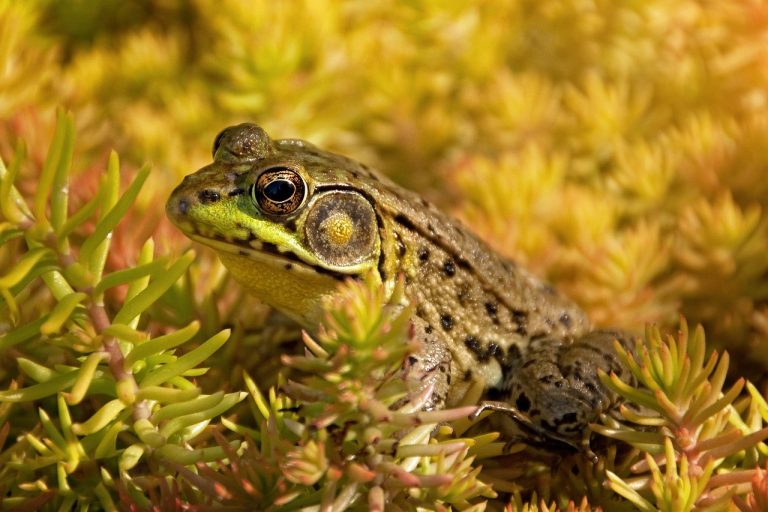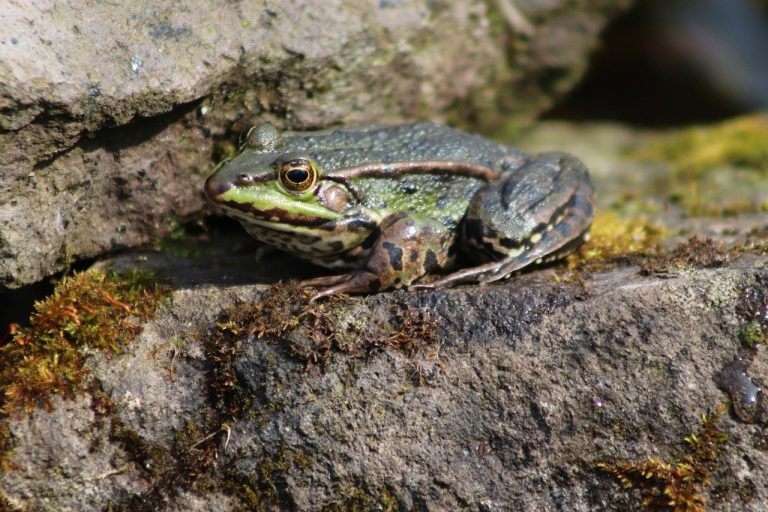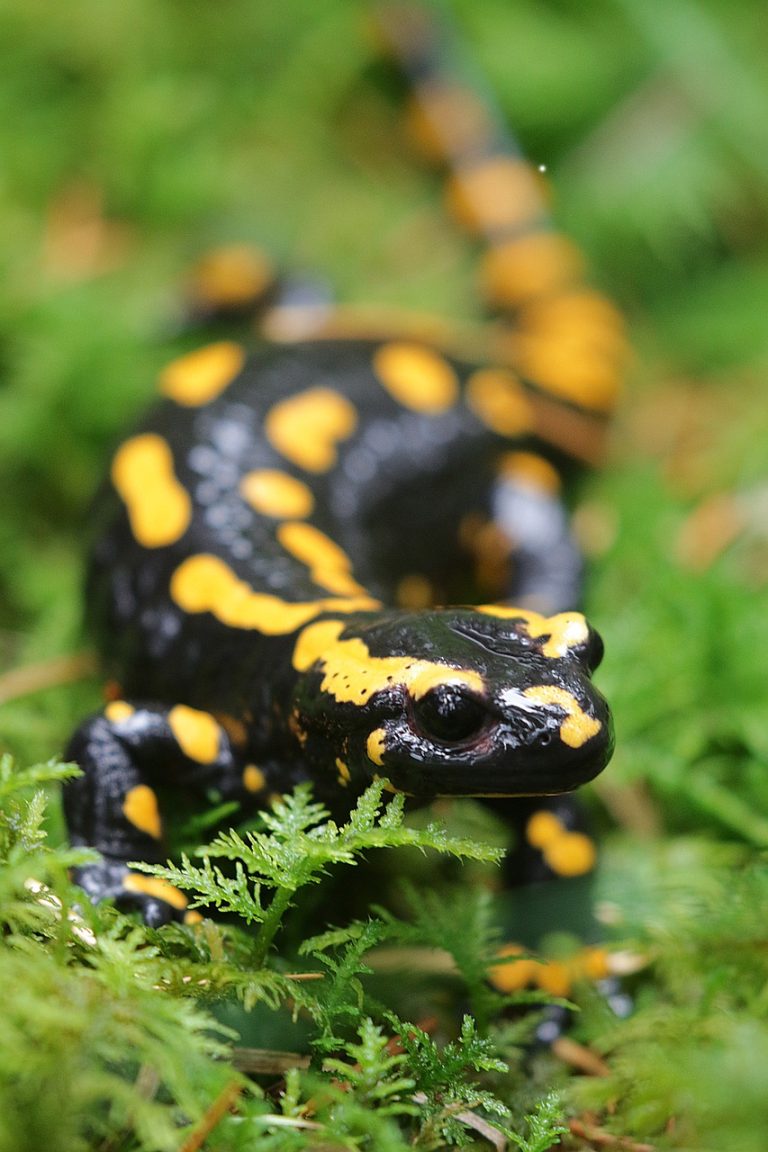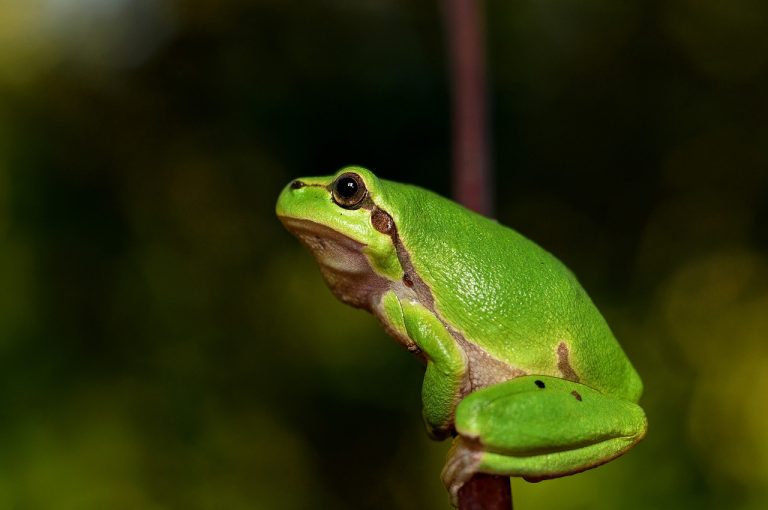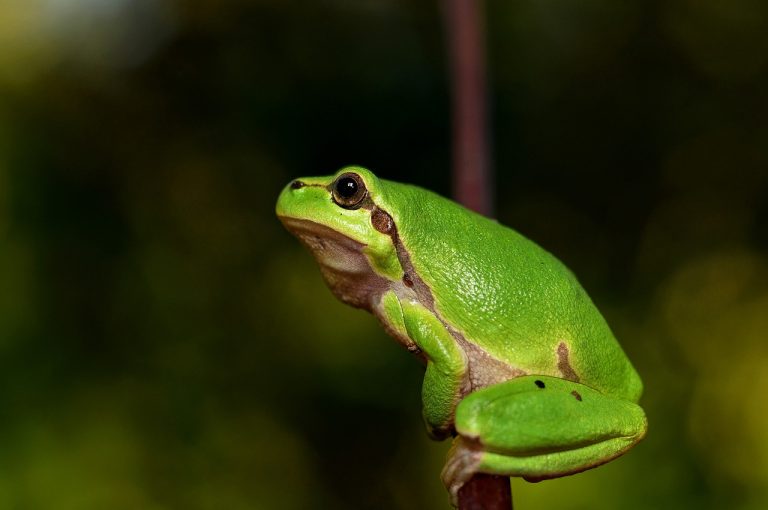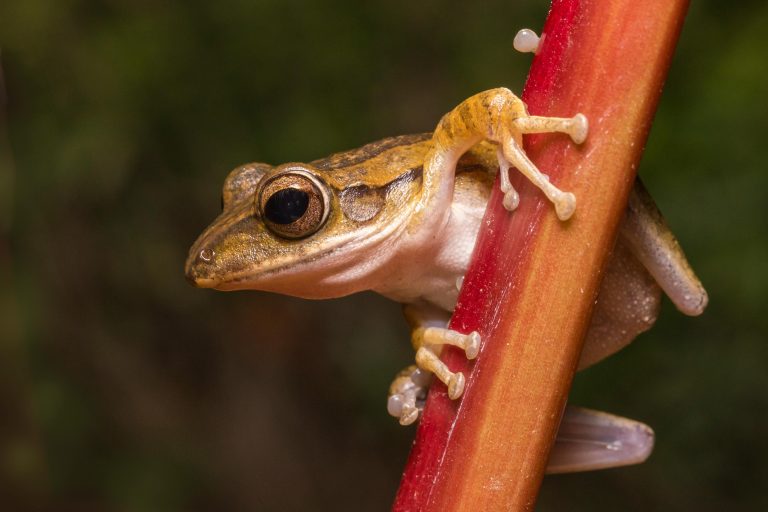Caecilian (Apoda)
“Some species’ babies use their hooked or scraper-like teeth to peel off and eat their mother’s skin.”
Caecilian Scientific Classification
- Kingdom: Animalia
- Phylum: Chordata
- Class: Amphibia
- Order: Gymnophiona
- Family: Caeciliidae
- Genus: Caecilia (Linnaeus)
- Scientific Name: Apoda
Conservation Status
- Status: Least Concern
Locations
- Africa
- Asia
- Central America
- North America
- South America
Caecilians are legless amphibians resembling worms or snakes, and they are found in tropical regions around the world. Despite their unusual appearance, they play an important role in their ecosystems. The conservation status of most caecilian species is considered to be of least concern, indicating that they are not currently at significant risk of extinction.
General Information
- Common Name: Caecilians
- Number of Species: 192
- Type: Amphibian
- Diet: Carnivore
- Habitat: Wet and tropical regions
- Locations: South America, South Asia, Southeast Asia, Africa, Central America, Seychelles
Physical Characteristics
- Color: Brown, Grey, Yellow, Black, Orange
- Skin Type: Smooth and moist
- Length: 3 inches to 5 feet
- Weight: Up to 2.2 pounds
- Lifespan: Up to 13 years in a zoo
Reproduction
- Litter Size: Two to 60
- Age of Weaning: Four to six weeks
Unique Traits
- Most Distinctive Feature: Some species’ babies have hooked or scraper-like teeth to peel off and eat their mother’s skin.
Diet and Predation
- Prey: Termites, earthworms, insects, and other invertebrates
- Predators: Snakes, chickens, pigs, tenrecs, fish
Threats
- Biggest Threat: Habitat loss
Interesting Fact
- Fun Fact: Some species’ babies use their hooked or scraper-like teeth to peel off and eat their mother’s skin, providing them with essential nutrients.
Caecilians are fascinating, often misunderstood amphibians that play a crucial role in their ecosystems. They have a wide distribution across tropical regions and exhibit unique behaviors and adaptations that make them a subject of interest for biologists and conservationists alike.
Caecilian Overview
Caecilians are smooth-skinned, limbless amphibians that vary greatly in size, ranging from 3 inches to 5 feet long. There are 192 known species, each adapted to wet and tropical regions.
Physical Characteristics
- Size: 3 inches to 5 feet in length
- Appearance: Smaller species resemble earthworms, while larger ones look like snakes.
- Tails: Some species have short tails, while others have none.
- Ears and Eyes: They lack visible ears and have tiny or hidden eyes beneath their skin, as they primarily live underground and do not rely on hearing or sight.
Habitat and Distribution
- Native Regions: South America, South Asia, Southeast Asia, Africa, India, Central America, and Seychelles.
- Recent Sightings: One was found alive in a canal in South Florida in 2021, likely introduced illegally through the wildlife trade. Caecilians are not naturally found in the Americas beyond southern Mexico.
Adaptations
- Lifestyle: Most caecilian species live underground, burrowing through soil. Their smooth, moist skin helps them move through their subterranean habitats.
Caecilians are a diverse and fascinating group of amphibians, with unique adaptations that allow them to thrive in their specific environments. Their underground lifestyle and distinct physical traits make them an intriguing subject for further study and conservation efforts.
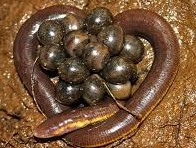
5 Incredible Caecilian Facts!
- Eyes Beneath the Skin: Some caecilians have eyes that are hidden beneath their skin, while others lack eyes entirely. This adaptation is due to their subterranean lifestyle, where vision is less important than other senses.
- Unique Tentacles: Caecilians are the only amphibians that possess tentacles. These sensory organs are located between their eyes and nostrils and help them navigate and detect prey in their dark, underground habitats.
- Colorful Variety: The many different species of caecilians display a rainbow of colors. They can be brown, grey, yellow, black, orange, or even display multiple colors, adding to their unique and varied appearance.
- Burrowing Adaptations: Caecilians have hard, compact skulls with pointy snouts that enable them to burrow efficiently underground. This physical adaptation allows them to navigate through soil and dense vegetation with ease.
- Unique Feeding Behavior of babies: Caecilian babies exhibit a remarkable behavior where they peel off and eat their mother’s skin. This specialized skin provides essential nutrients to the young, helping them grow and develop in their early stages of life.
Caecilians are truly fascinating creatures, showcasing a range of unique adaptations and behaviors that make them stand out among amphibians.
Scientific Name
Origins of the Name and Taxonomy
- Name Origin: The name “caecilian” is derived from the Latin word “caecus,” meaning blind. This name reflects their often sightless appearance due to their subterranean lifestyle.
- Scientific Classification: All modern and extinct caecilian species are classified under the order Gymnophiona. However, there is ongoing debate among scientists regarding the appropriate scientific name for these creatures.
- Alternative Name: Some scientists argue that caecilians should be classified under the scientific name Apoda, meaning “without feet.” This name emphasizes their limbless nature, which is a distinguishing feature of the group.
- Taxonomic Update: Until after 2011, only nine families and under 200 species of caecilians were known to exist. However, the discovery of a 10th family called Chikilidae expanded our understanding of caecilian diversity and taxonomy. This ongoing exploration highlights the dynamic nature of scientific understanding and classification within the field of biology.
Appearance & Behavior
Caecilians are fascinating amphibians with unique adaptations suited to their subterranean lifestyle.
- Limbs and Appearance: Caecilians lack limbs and resemble worms or snakes, with sizes ranging from three inches to almost five feet long. Some have short tails, while others have none.
- Skin and Coloration: Their slippery smooth skin varies in color, including shades of brown, gray, black, orange, or yellow, with some species displaying more vibrant colors. Most caecilians have calcite scales covering their skin, except for certain families like Scolecomorphidae and Typhlonectidae.
- Segmentation and Glands: Ring-shaped folds give caecilians a segmented appearance. They possess skin glands that secrete toxins to deter predators, and some species may have venomous bites.
- Teeth and Feeding: Caecilians have sharp teeth resembling fangs, enabling them to catch and swallow prey whole. They are carnivorous, preying on various invertebrates.
- Eyes and Vision: Most caecilians lack eyes or have only gray eye-like dots beneath their skin. They can only distinguish between light and dark, as they primarily inhabit underground environments where vision is unnecessary.
- Burrowing Adaptations: Adaptations for burrowing include a hard skull with a pointed snout and recessed mouth, along with strong muscles for pushing through the ground.
- Swimming and Breathing: Caecilians can swim like eels but need to surface to breathe. Some larger species are aquatic, possessing fins along the rear of their bodies.
- Tentacles and Sensory Organs: All caecilians have two tentacles used for sensing their environment, combined with a keen sense of smell. They are the only amphibians with tentacles.
- Respiration: Most caecilians have lungs but can also absorb oxygen through their skin. Some species have one lung smaller than the other due to their body shape.
- Behavior and Social Structure: Little is known about caecilian behavior, social structure, or temperament. Their lifestyle and habits remain largely mysterious to scientists, including whether they live solitary lives or interact with others of their kind.
Caecilians continue to intrigue researchers, and further study is needed to unravel the mysteries of these fascinating amphibians.
Habitat
Caecilians inhabit diverse environments, primarily underground, but some venture into shallow streams within wet and tropical habitats.
- Burrowing Lifestyle: Most caecilians live underground, where they burrow, reproduce, and hunt for prey. Their subterranean lifestyle helps them avoid predators and maintain moisture levels essential for survival.
- Habitat Range: Caecilians are native to various regions, including Central America, South America, South Africa, Central Africa, South Asia, and Southeastern Asia. They thrive in wet and tropical environments characterized by high humidity and abundant rainfall.
- Elusive Nature: Due to their predominantly subterranean existence, caecilians are rarely encountered in the wild. However, some species, such as the giant Caecilia pachynema from Ecuador, may surface during rainstorms or at night, providing occasional glimpses to observant individuals.
- Aquatic Abilities: While most caecilians are terrestrial, some can tolerate aquatic environments and may be found in shallow streams or water bodies within their habitats. These amphibians possess adaptations that allow them to hold their breath underwater for extended periods, with some capable of remaining submerged for up to 30 minutes before resurfacing to breathe.
Caecilians’ ability to thrive in various habitats and their elusive nature contribute to the mystique surrounding these unique amphibians. Despite their underground lifestyle, they play vital roles in their ecosystems and are subject to ongoing research and conservation efforts to better understand and protect their diverse populations.
Predators & Threats
Caecilians possess unique feeding behaviors and adaptations suited to their subterranean lifestyle.
- Prey Capture: Rows of sharp fangs enable caecilians to capture prey efficiently. They clamp down onto earthworms and utilize a rolling motion to stun and drag their prey into their underground lairs.
- Prey Consumption: Caecilians swallow their prey whole, similar to pythons, rather than chewing it into pieces. This feeding strategy allows them to consume large prey items and is facilitated by their strong jaws and mouths.
- Venomous Adaptations: Some caecilian species may possess venom glands behind their teeth, akin to rattlesnakes. This venom aids in subduing prey and may contribute to their effectiveness as predators.
- Dietary Preferences: While scientists are still studying the dietary habits of most caecilians, captive specimens have been observed consuming a variety of prey items, including earthworms, crickets, termites, beetle pupae, mollusks, small snakes, frogs, lizards, small fish, larvae, insects, and other invertebrates.
Predation and Defense Mechanisms
- Predators: Caecilians face predation from various animals, including snakes, fish, chickens, pigs, and tenrecs. Their underground lifestyle offers some protection, but some species’ skin secretes toxins, making them unpalatable to predators.
- Natural Predators: Due to their elusive nature and recent discoveries, scientists are still studying the natural predators of caecilians. However, their habitat loss due to non-timber agriculture and fire poses a significant threat to their survival.
Conservation Status
- IUCN Red List: Approximately 185 caecilian species are tracked by the IUCN Red List, with the majority listed as “Unknown” due to limited data. However, less than 10 species are considered “Stable,” while others are experiencing decreasing numbers. Some species, such as the Mount Oku Caecilian of Cameroon, are critically endangered due to habitat loss.
Caecilians play crucial roles in their ecosystems, and further research and conservation efforts are needed to ensure the survival of these unique amphibians. Their mysterious behaviors and adaptations continue to intrigue scientists and conservationists worldwide.
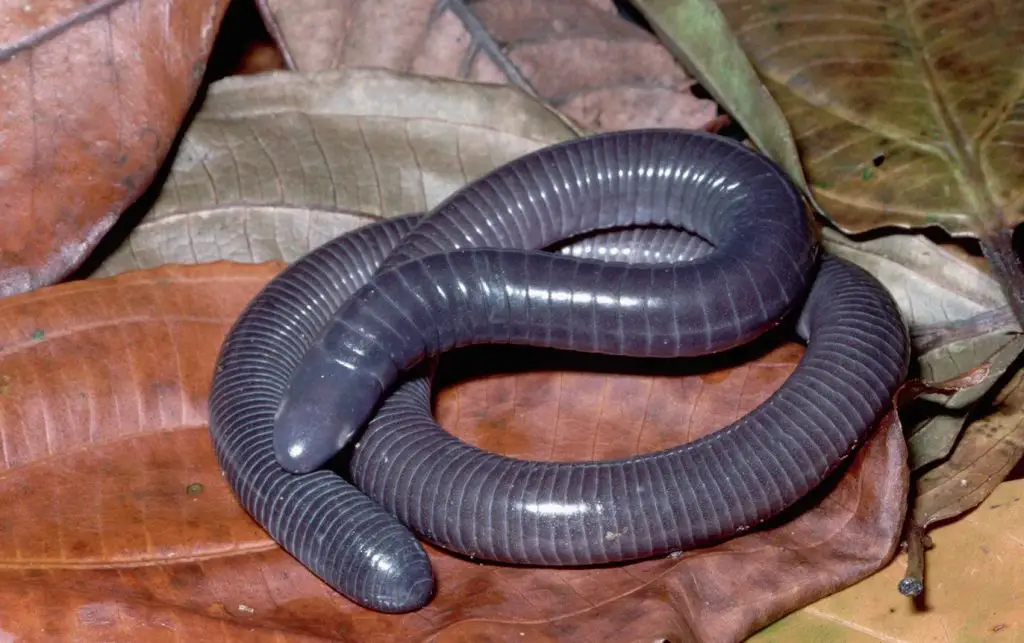
Reproduction, Babies, and Lifespan
Caecilians exhibit fascinating reproductive behaviors and parenting strategies, contributing to their uniqueness among amphibians.
- Internal Insemination: All caecilian species reproduce using internal insemination. The male possesses a long, tube-like phallodeum used to impregnate the female. Reproductive connections can last for two to three hours before the mates separate.
- Variety in Reproductive Methods: Approximately one-quarter of caecilian species lay their eggs in underground dens or water, while the remaining 75% give birth to live young.
- Maternal Care and Feeding: After birth or hatching, the young of some caecilian species stay with their mother for four to six weeks. Some mothers exhibit a unique feeding behavior, growing thickened layers of skin that young use hook-like or scraper-like fangs to pull away and eat. This feeding may even occur while the young are still inside the mother’s womb, with the mother’s skin cells plumped up with fat to specifically nourish her offspring.
- Litter Size: Caecilians exhibit variability in litter size, with some species giving birth to two to 25 live young, while others lay between 30 and 60 eggs.
- Longevity: Caecilians in zoos have been observed to live for as long as 13 years. However, their lifespan in the wild remains largely unknown and is expected to vary widely among species.
Caecilians’ reproductive and parenting behaviors offer intriguing insights into their evolutionary adaptations and life history strategies. Further research is necessary to fully understand the complexities of their reproductive biology and its implications for their conservation and survival in the wild.
Evolution
The evolutionary history of caecilians remains a captivating mystery, with scientists continuously uncovering new clues to piece together their origins.
- Late Fossil Discoveries: The first fossilized specimen of a caecilian was unearthed relatively recently in 1972, with further discoveries emerging in the 2000s. These findings shed light on the early ancestors of caecilians and revealed intriguing characteristics.
- Ancient Limbed Ancestors: Recent fossil discoveries unveiled that early caecilian ancestors possessed small limbs and better-developed eyes compared to their modern counterparts. This suggests that caecilians may have evolved from ancestors with more terrestrial adaptations.
- Potential Amniote Ancestry: The presence of small limbs and well-developed eyes in early caecilian ancestors has led biologists to speculate that caecilians could have evolved from amniotes, a group that includes reptiles, birds, and mammals. This hypothesis is further supported by the unusual reproductive traits exhibited by caecilians compared to other amphibians.
- Ongoing Research and Debate: As more theories and fossils come to light, scientists’ understanding of the origins of caecilians continues to evolve. New evidence challenges existing conceptions and prompts researchers to reevaluate their hypotheses regarding the evolutionary history of these enigmatic amphibians.
The evolutionary journey of caecilians is a captivating tale of adaptation and diversification, and further research promises to unravel more mysteries surrounding their origins and evolutionary relationships.
Population
The diversity of caecilian species is indeed remarkable, with over 200 known species distributed across various regions of the world. However, like many other amphibians, caecilians face threats such as habitat loss, pollution, and climate change, leading to population declines in some species.
It’s concerning that the Mount Oku Caecilian of Cameroon has been classified as Critically Endangered. This designation underscores the urgent need for conservation efforts to protect its remaining populations and their habitats. By raising awareness, implementing protective measures, and supporting research, we can work towards ensuring the survival of this unique amphibian species and others facing similar threats.
Before You Go…
Caecilians are fascinating and enigmatic creatures that inhabit various regions across the globe, from tropical forests to underground burrows. Their limbless, worm-like appearance and unique adaptations, such as tentacles and specialized jaw structures, set them apart from other amphibians. Despite their diverse species and habitats, many caecilian populations face threats from habitat loss, pollution, and climate change. Conservation efforts are crucial to safeguarding these remarkable amphibians and preserving their ecological roles in their respective ecosystems.
Reference:
